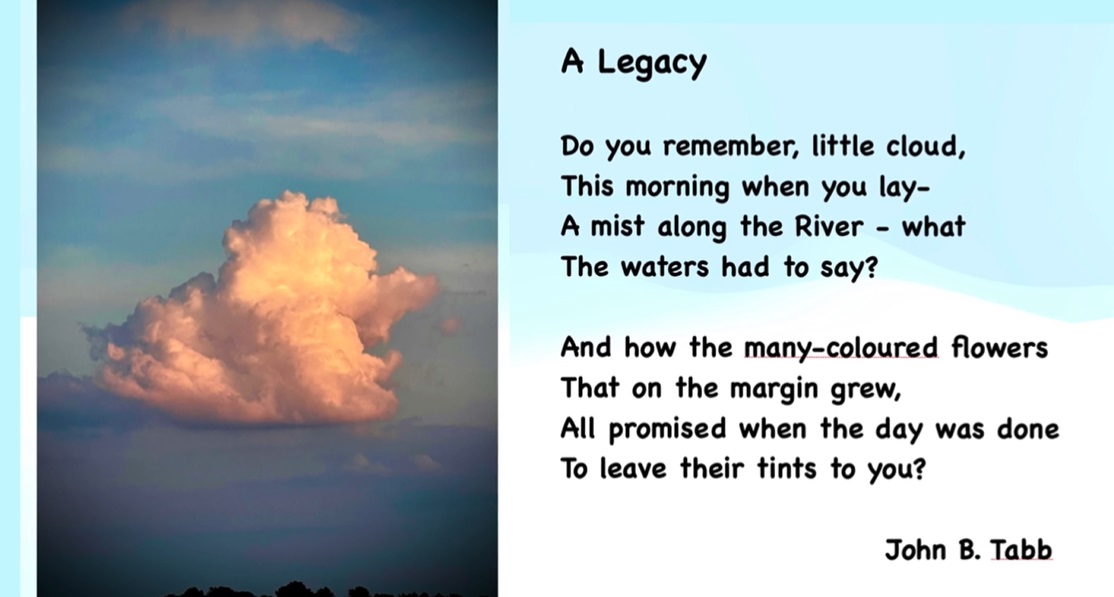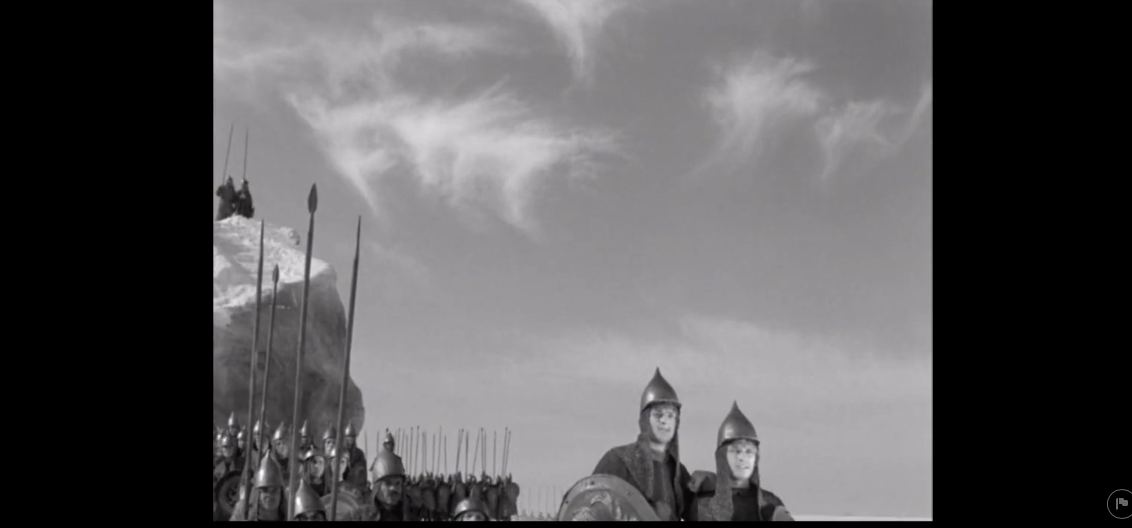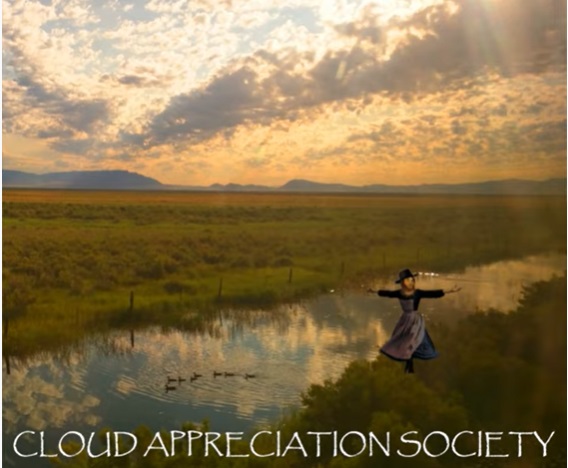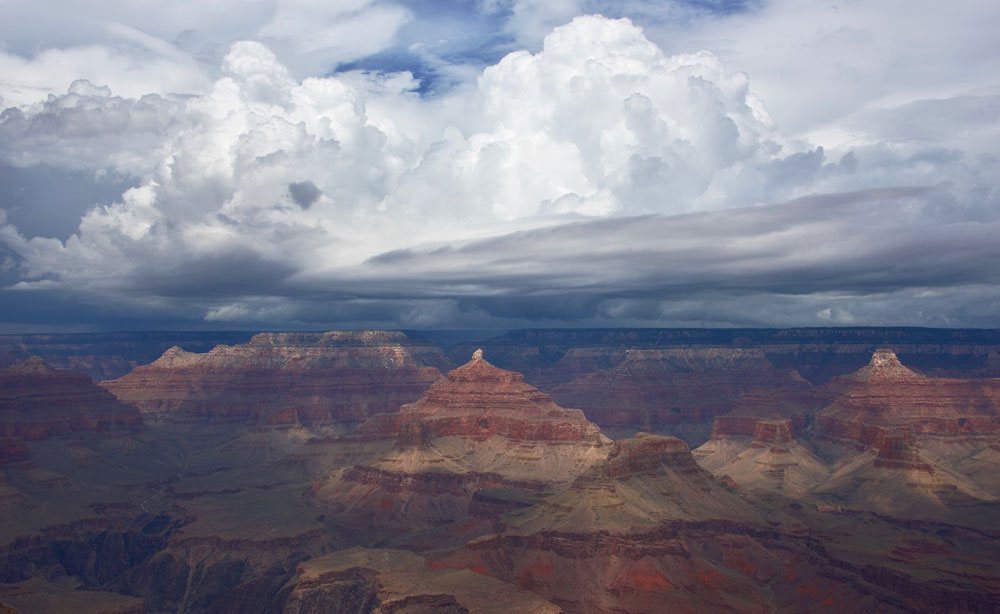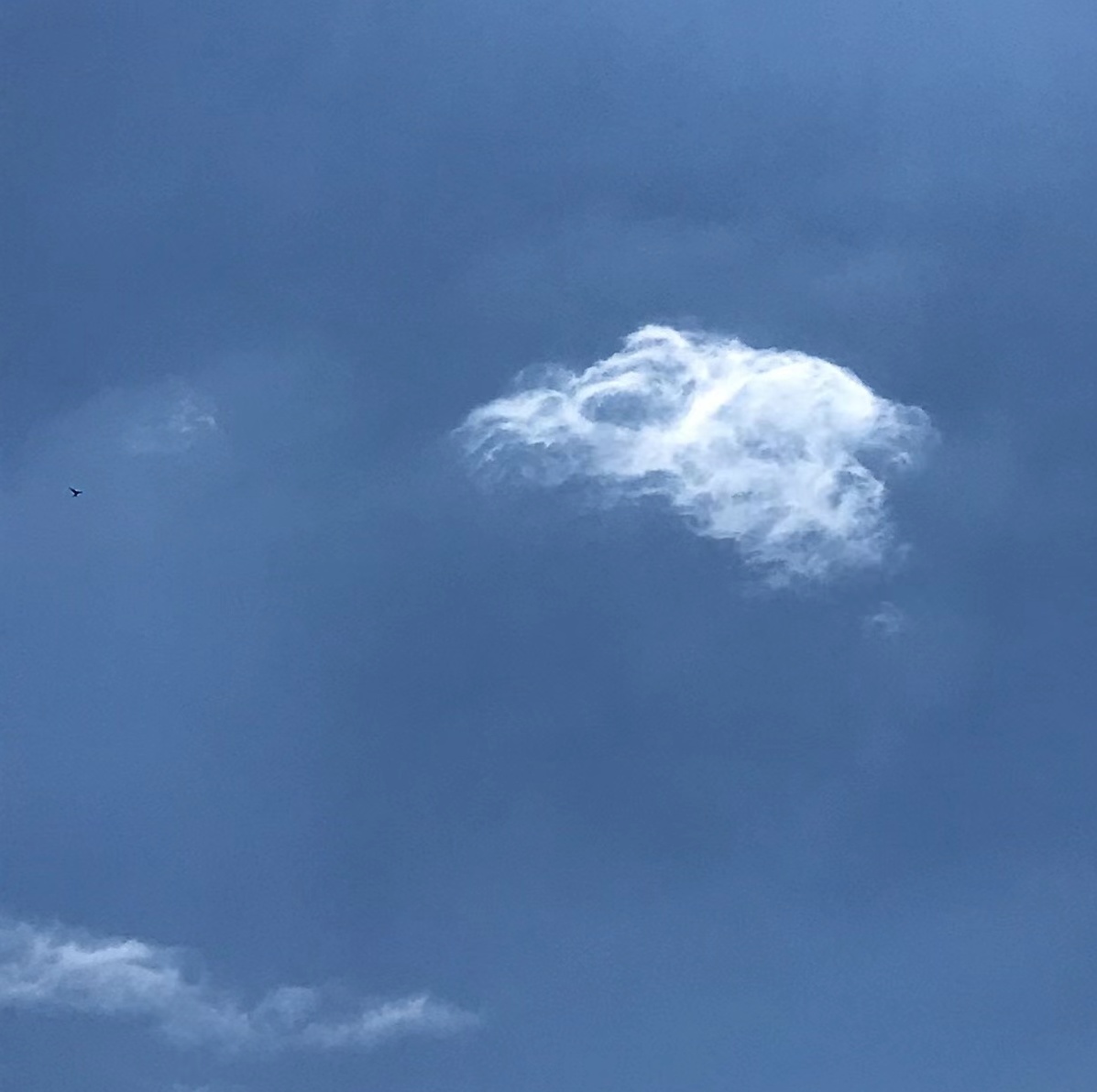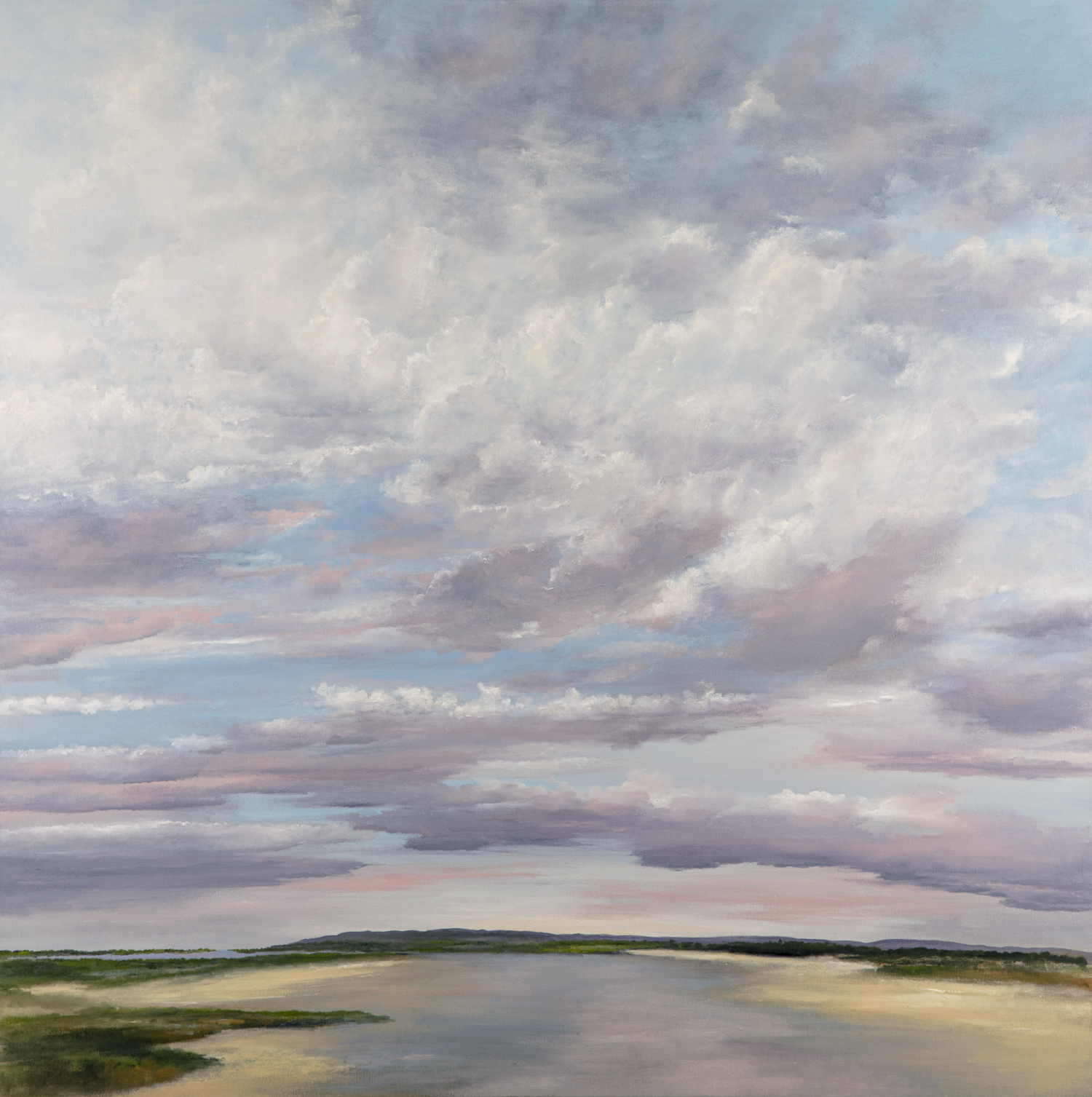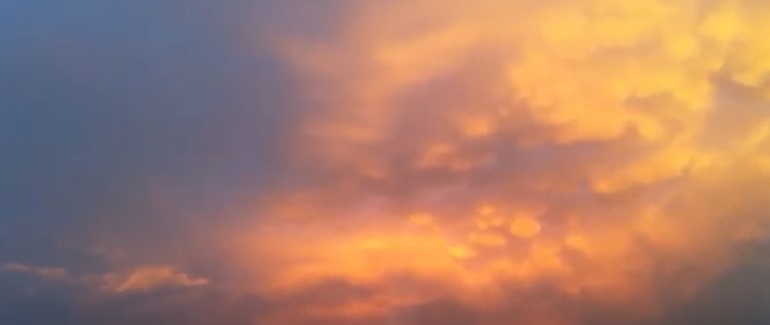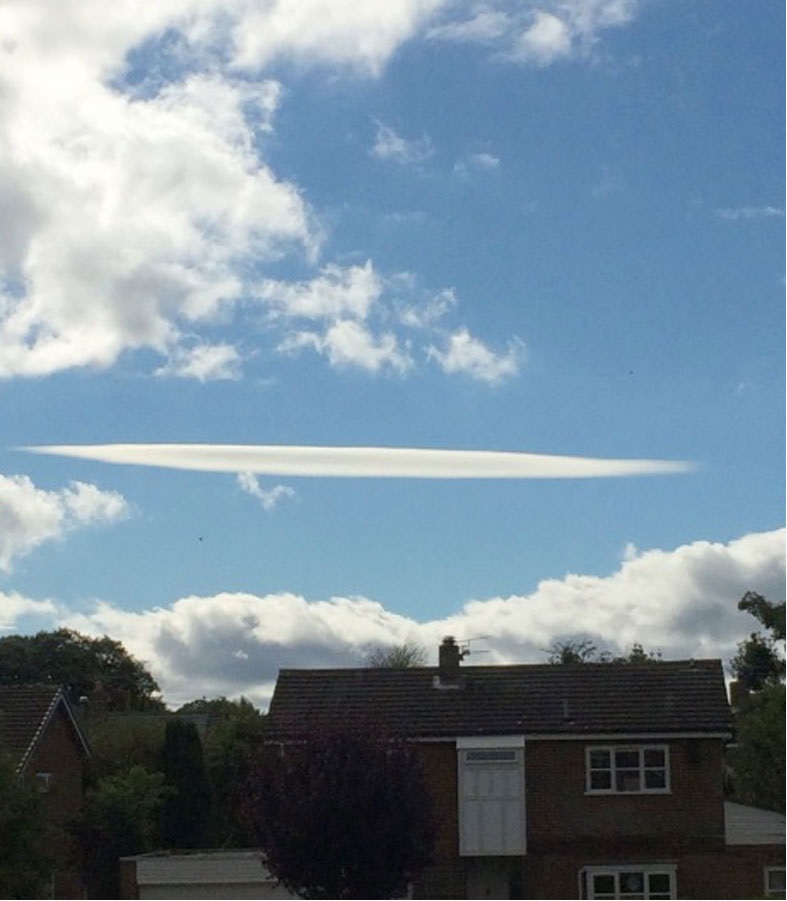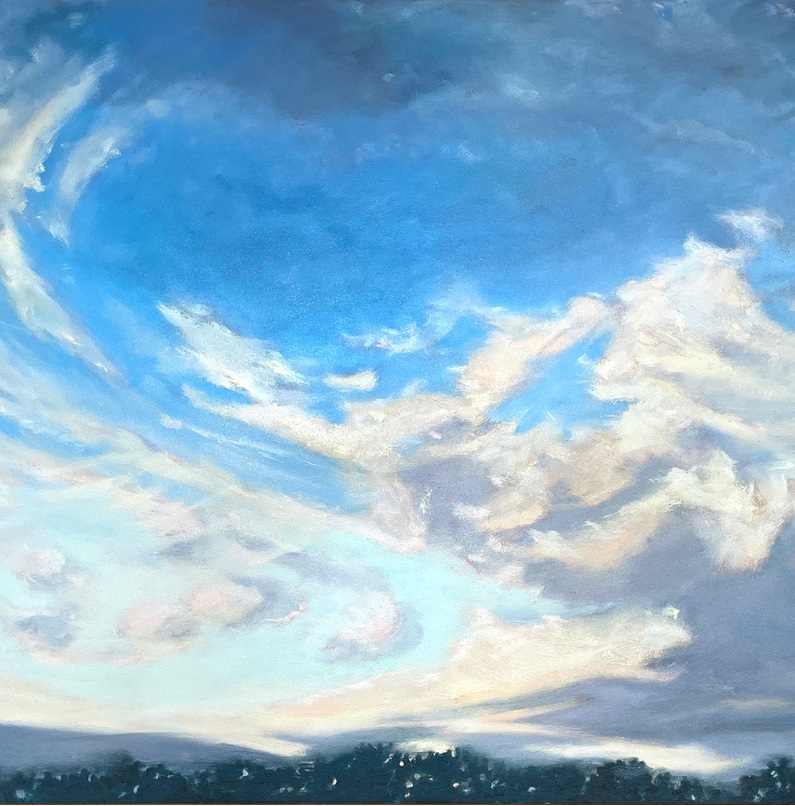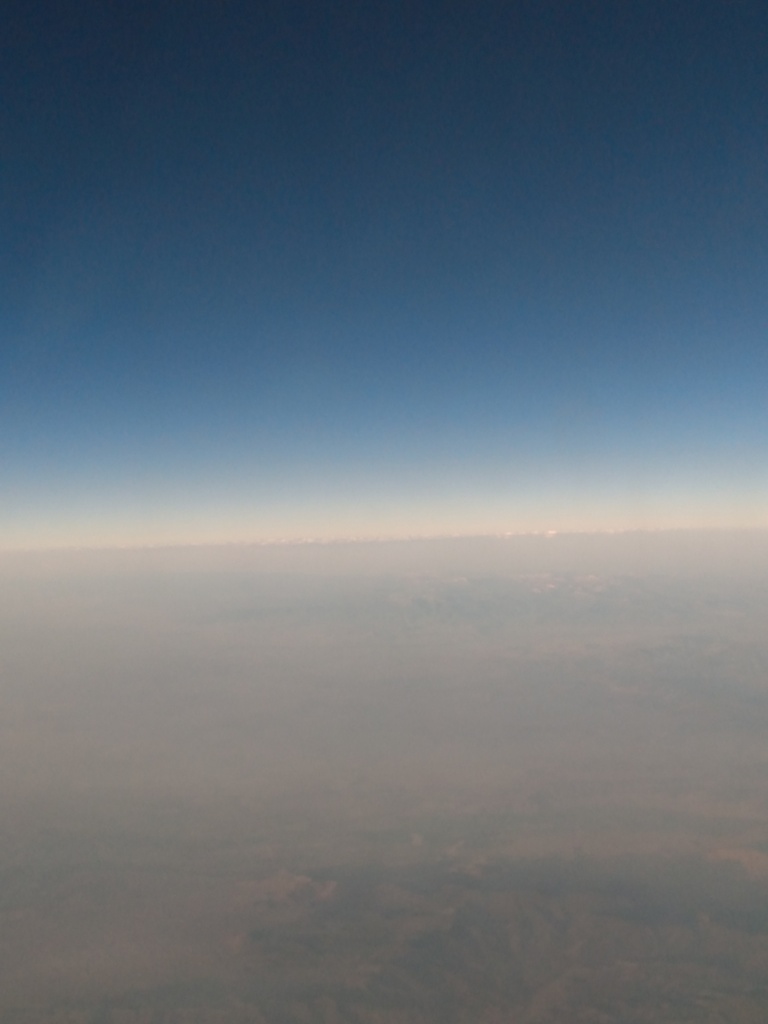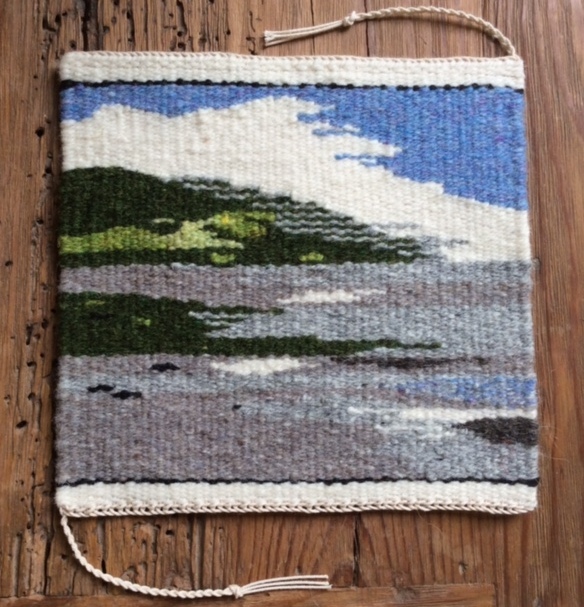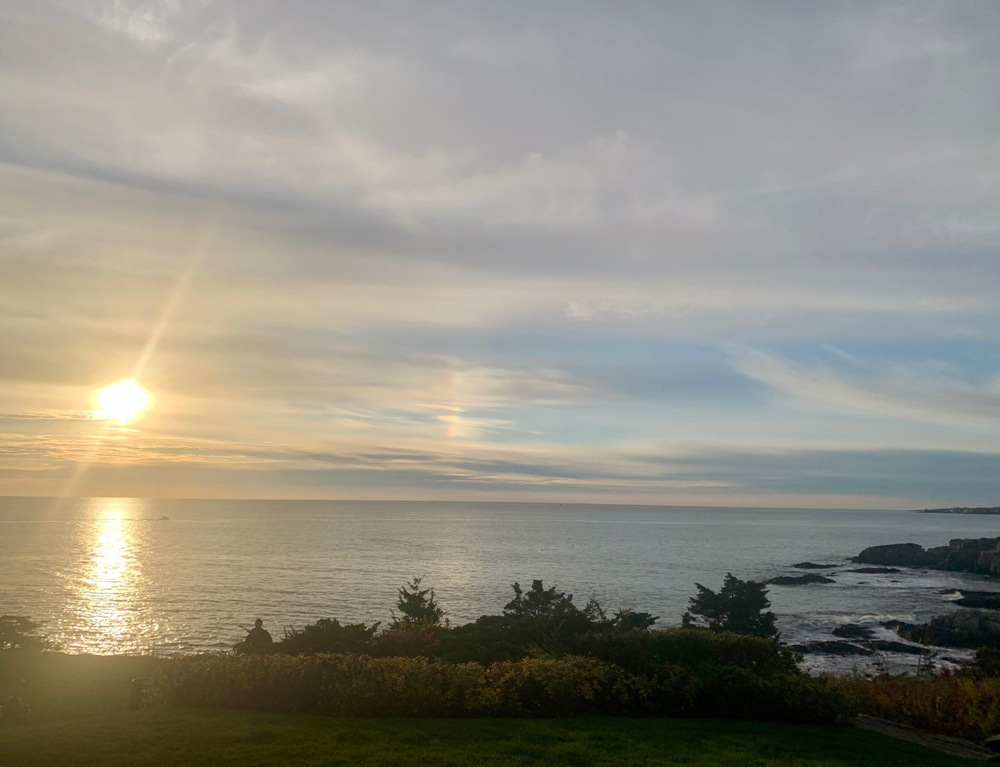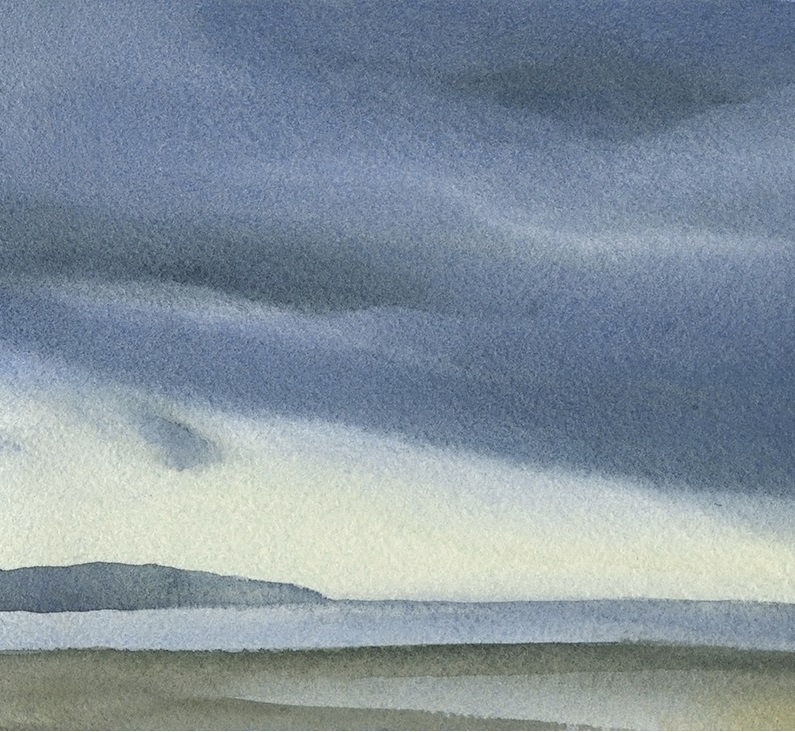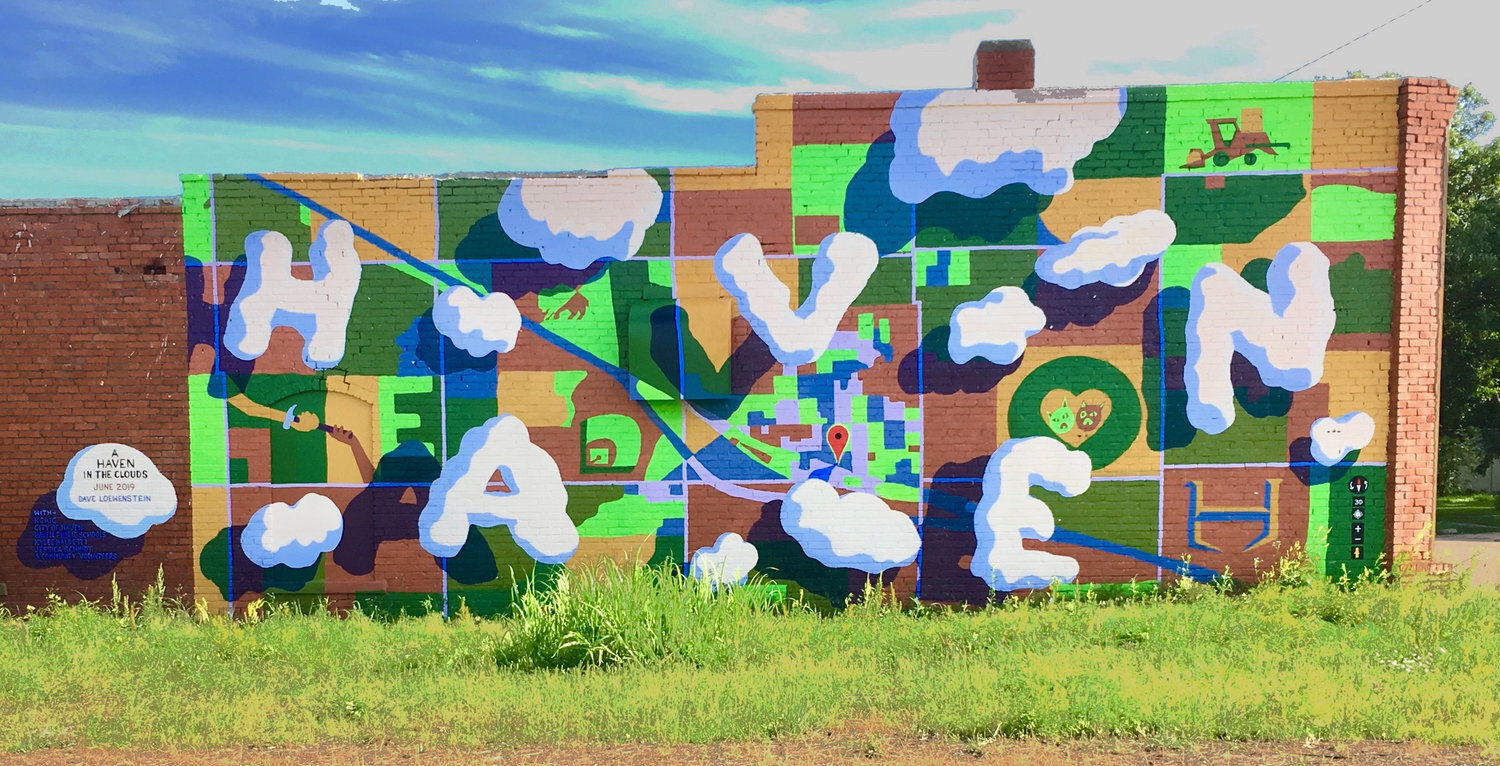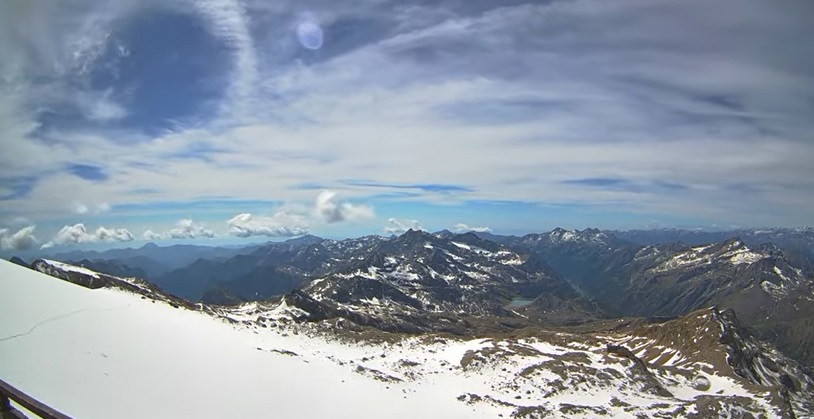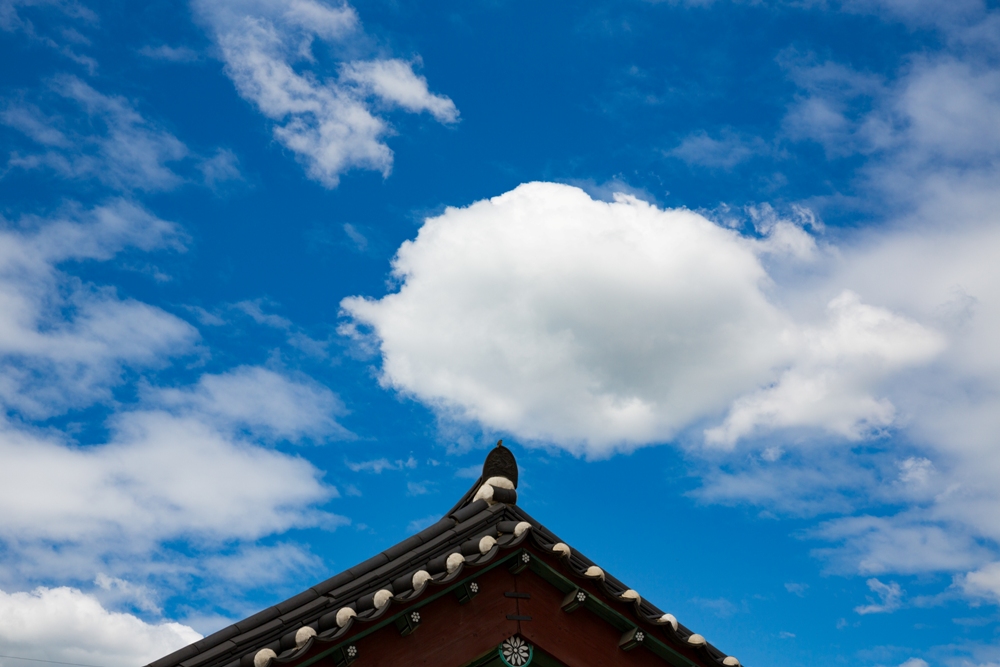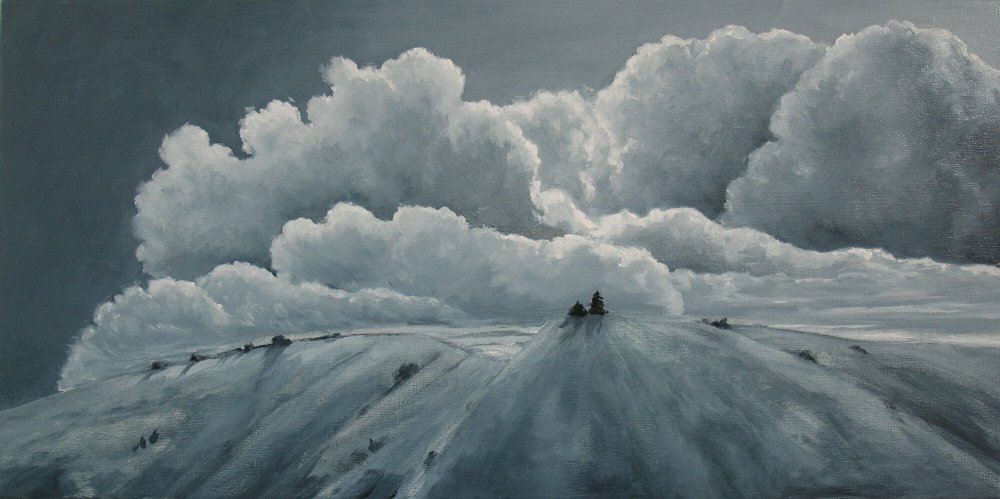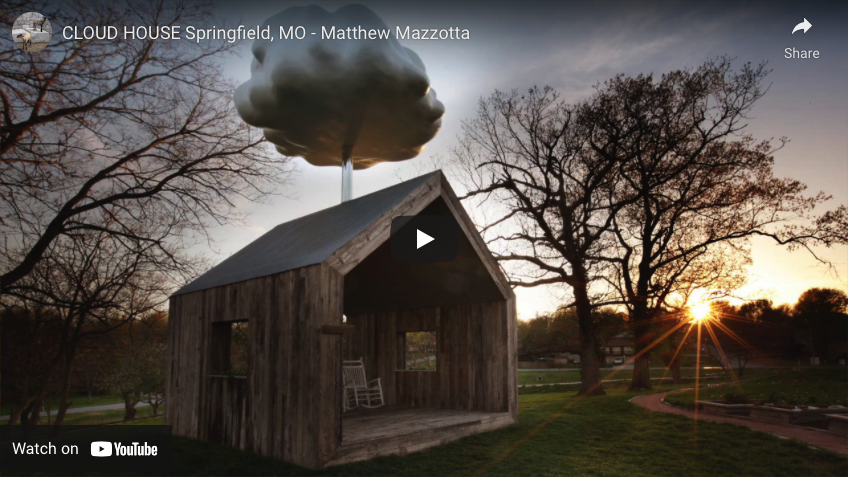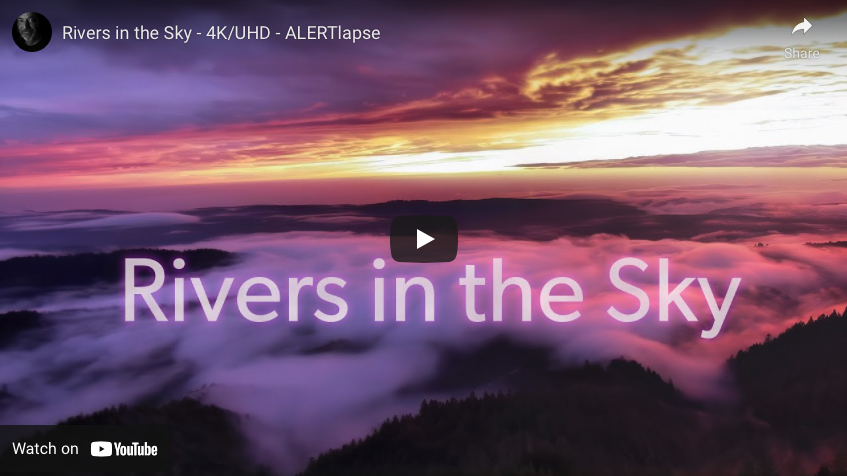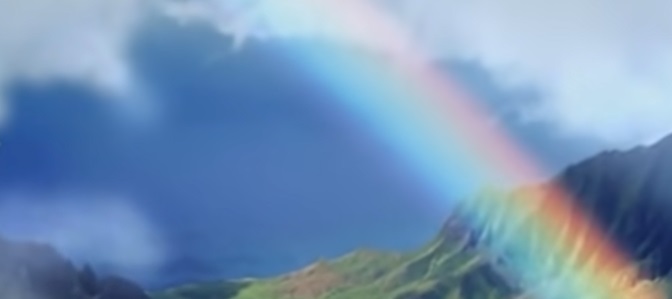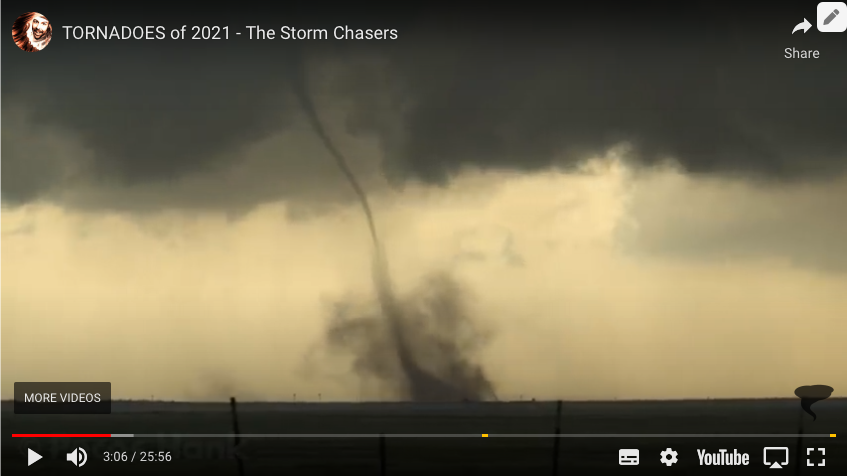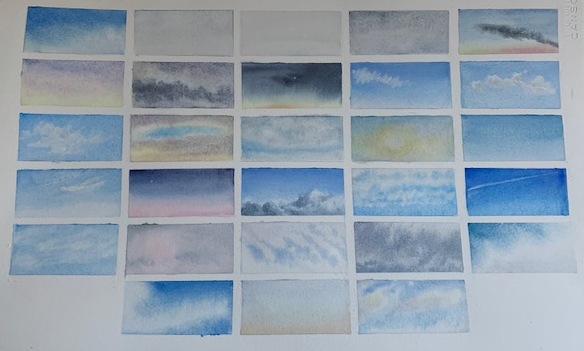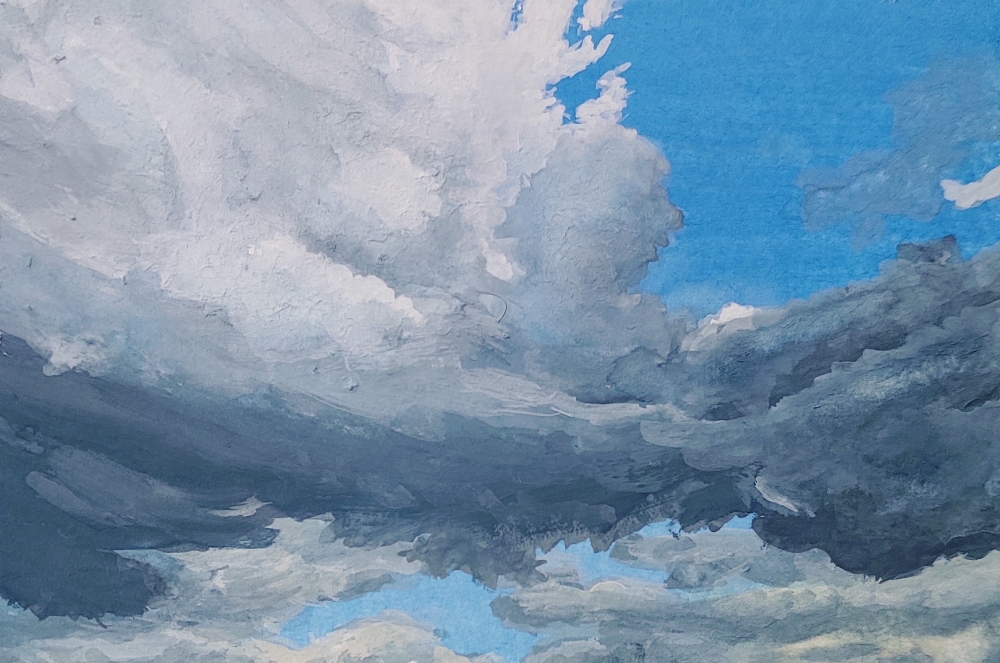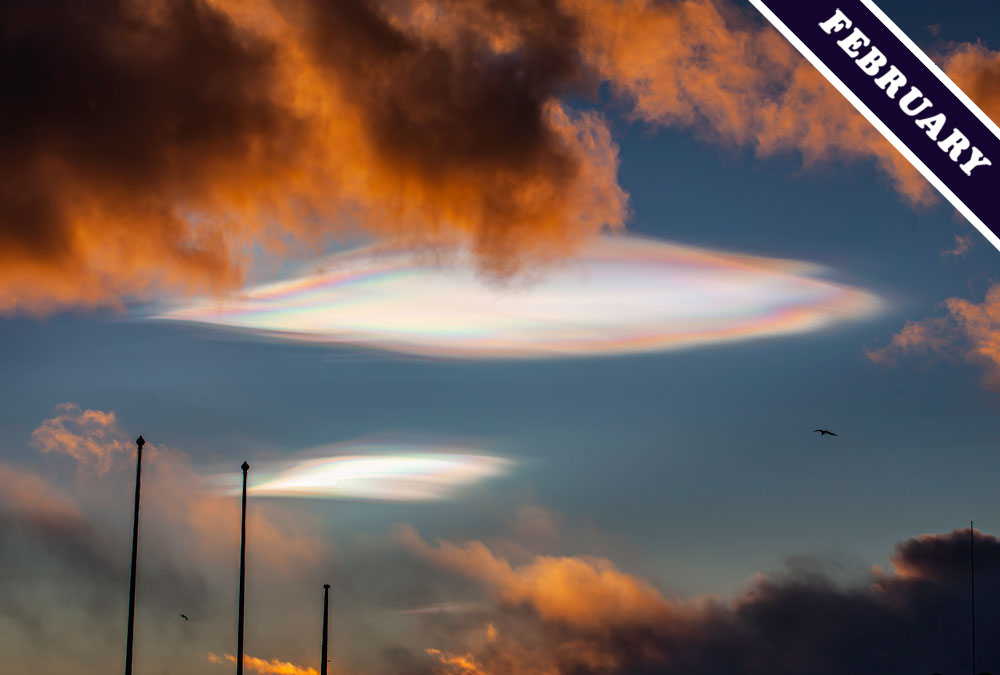Ian Morris is an artist from Manchester, England. He works in different mediums and sent us one of his recent cloud related artworks.
Category: Homepage
Julie Schaeffer, Member 59,332 lives on Marshy Creek in Grasonville, MD. She created this relaxing video with images of different clouds and quotations.
Artist, Hyejin Park, has sent us her latest watercolour – a peaceful cloud to bring some calmness to our day.
Sherman Schapiro, Member 56,083, sent this short poem inspired by our Halloween Cloud-a-Day – an Altocumulus ‘supercilium’, a cloud term yet to be recognised as an official one, spotted haunting the sky over San Anselmo, California, US by Lee FitzGerald (Member 50,400).
Heavenly “Boo!”
Eerie skies above,
like tentacles descending.
Clouds for Hallowe’en.
© Sherman Schapiro
Sandro Lecca (Member 58,283), who is based in Sardinia, Italy, has put together a compilation of classic cloud-themed scenes from the world of cinema. Including clips from directors like Arnold Fanck in the 1920s, Sergei Eisenstein in the 1930s, Roberto Rossellini in the 1950s right up to those of the modern day, ‘Cinema e Nuvole’ is Sandro’s homage to the sky in movies. You’ll find the sources of the clips he featured listed at the end.
Samual Wagner (AKA The Reverend Sam), was taking a cross-country train trip through the USA in the summer of 2019. He told us “One day in the dining car I met the nicest old lady. We shared pictures of clouds, and she introduced me to the Cloud Appreciation Society. The clouds were so beautiful and she was so sweet I had to make a song about it”
Sherwin Berger, member 18,239, sent us his latest cloud inspired poem entitled “Nature’s Magicians”.
Martien Van Beeck is an artist based in Ghent, Belgium. His painting “Sky #32” is from an ongoing series of cloudy skies
Guo Wei, Member 57,319, wrote this poem after seeing Circumzenithal Arc when leaving home one morning. The image shared here was taken on a walk in Beichen Mountain, Xiamen, China
《解构与重组——环天顶弧之歌》
每一天
我站在原地
万事万物流过我
以气息、话语、文字
咀嚼的质地
或只是纯粹明暗的光线
渐变的波长、频谱
穿透我
用一切确定与不确定性,将我
扭转、分散、符号化
风把我的碎片卷曲、打包
投向高空的尘埃和冰晶,以及大气中
无法自证其存在的颗粒
于是我习惯性在清早眺望太阳凝望的方向
终见天空微笑
© Guo Wei
Michelle Purves, Member 59,285, is besotted by clouds and she tells us “my passion is to paint the ever illusory, changing, ethereal beauty that connects sky to the landscape. In Australia my inspiration comes from the remote pristine inlets, and the continuum of soaring skies”.
Sherman Schapiro (Member 56,083) of Eureka, CA, USA wrote this Haiku after seeing the Cloud-a-Day of 14th August 2022. We’ve accompanied it with the image used in that Cloud-a-Day which was taken by Celia Quinn (member 53,053) and shows Cirrus uncinus clouds over Mount Pinos in the Transverse Ranges, South California, US
Cirrus uncinus
Those wispy wonders;
Kitelike clouds fly high above,
Spirits in the sky.
© Sherman Schapiro
Videographer, Gregory Volkov sent in this video capturing the sunset after a storm in Sarasota Florida, 2018.
Ric Johnson has written “Cloudship, Spaceship”, a poem based on this photograph he took which was obviously a flying saucer disguised as a cloud!
CLOUDSHIP, SPACESHIP
Oh, gorgeous saucer
Cruising, skirting
Clouded skies.
Slim saucer surveying
A cloudship sweeping
In trim exercise.
Cloudship as spaceship
Skims on patrol
Perhaps us they despise.
Camouflaged spaceship
Cunning as cloud
And quietly spies.
Marauding she gleams
A sauntering dreamer
Our world she defies.
Assessing, digesting
Thinking, deciding
As time flies.
Such spirit of travel
Exploring new dawns
While thought multiplies.
In our world unread
We battle away
Unaware of surprise.
Deceiving me here
She’s nothing but vapour
As the crow flies.
Gleaming creature depart
Away from our years
Leaving us to our skies.
Unforming, dissolving
Maybe sensing our sorrows
As Earth cries.
© Ric Johnson – Another Liverpool Poet
Sean McGowan recently sent through some music he created that was inspired by different cloud forms and intended for cloud watching. We hope you enjoy it as much as we did.
Listen here:
Daryl D. Johnson (Member 45,193) paints from her photos in a studio in New Orleans, Louisiana, USA. “Most times I see clouds as hugging energy and a comfort to be under. Uplifting and inspiring to higher thought and acts.”
Treading Light 30×48” Oils on canvas
You can see more of her work on her Website, Facebook page and Instagram
Massimilano Squadroni sent us his latest timelapse “Sunrise and Moon”. It was filmed on 13th July 2022 at Osservatorio Capanna Regina Margherita, a mountain hut belonging to the Italian Alpine Club located on the summit of Punta Gnifetti of Monte Rose near the border between Italy and Switzerland. He told us “The moon sets in the sea of clouds, the climbers leave the hut, bright spots along the way back, the sunrise from Punta Gnifetti is a unique emotion”
Rachel Jacobs, Member 55,934 wrote told us she “created a poem for the firmly-minded purpose of the well-being of the clouds”. We hope you enjoy it as much as we did.
The Clouds of Life
A round of life, and that of death
Who beckons those away.
Who steals the knife, who steals the breath
Of those who yearn to stay.
Of brevity, of shortness
Rather infant fresh demise,
Of lives and souls of drifting wisps,
Of youth with all but lies.
To them they are of Cirrus
Who crane their necks to see,
A faintly there, but there alas,
Of actuality.
Of those who seek revenge,
Who sought and seek and went,
To all the spitting measures
But never reached content.
Altocumulus they turn,
Their souls reach up and are,
Through hills and dales they try and fail
A moon without a star.
And gentlemen and ladies
With motives good and true,
Who shine through after darkness
And honour through and through,
These noble ones at heart,
Who learned in the lore,
Become all the fair cumulus
In kindness evermore.
And it comes, by-and-by,
From solid, sinking, be,
To serene drifting sighs,
Of man dustpaned by me.
Swept away by rolls of clouds
With kerchief, breath and shroud,
For life nor death can sunder
All the love to man endowed.
© Rachel Jacobs 2022
Lucretia Bingham, member 53,512, recently completed this painting of winter clouds – all silver threads and golden needles, pierced with greys.
Toni Prothero, member 57,032, wove this tapestry showing clouds moving across a headland at Clallam Bay in Washington State
Cumulonimbus storm clouds spotted over the Atlantic Ocean by astronauts aboard the ISS…
Kathleen Janick, member 49,856, recently wrote this poem inspired by the photograph above which was taken one morning in November off the coast of Maine.
Paul Schmid, is an artist and children’s book author/illustrator living on an island in the great Pacific Northwest. He is a signature member of the Puget Sound Group of Northwest Artists and you can see more of his work on his website.
Dave Loewenstein, Member 58,926, created this cloud-themed mural entitled “A Haven in the Clouds”. The mural in central Kansas, designed and painted with local high school students, imagines a bird’s eye (or satellite’s) view above clouds that spell out the town’s name, Haven, and if you look closely, Heaven, thanks to the letter E that appears one of the farm fields.
ou can see more about it on Dave’s website – DaveLoewenstein.com
Massimiliano Squadroni, shared this timelapse of the formation of a supercell on Saturday 28 May, which affected the Vercelli area in north Italy with violent rain, hail and gusts of wind.
The storm system is seen from the terrace of Capanna Gnifetti 3647, Monte Rosa, Italy
Barbara Reid (Member 43,009) is a Canadian cloud watcher and children’s book author and illustrator. Her illustrations are created with plasticine modelling clay
This poem was written after opening an email from the Cloud Appreciation Society by
Sun-Hee Yang (Member 47,842), a poet based in South Korea
Regina Burchett is an American Artist painting clouds, skies and landscapes in oil, pastel and charcoal. She has lived for many years in Austin, Texas and now resides in North Carolina.
This recent painting, “The Sentinel I” is oil on canvas and you can see more of her work on her website.
Ric Johnson, a poet from Liverpool, took this photograph and wrote a limerick about it whilst travelling North on the M6, somewhere in the Midlands, UK. This particular kiss only lasted for a very short time before dissolving.
The Kiss
You may think this is just hit and miss
When two clouds have a moment of bliss
A collision of lips at height atmospheric
Left us loonies below in a state quite mesmeric
As giants melt in Cumulus kiss!
© Ric Johnson 2022 – Another Liverpool Poet
Theresa Mohaddes (member 54,684) came across this art piece by Tacita Dean at the San Francisco Museum of Modern Art.
Kristen-Rose DiMartino (member 47,377) proposed “Big Cloud” by Radiator Hospital for the Music to Watch Clouds By section of our website
Rebecca Marr (member 7,548) shared this video by the American socially engaged artist Matthew Mazotta, of his CLOUD HOUSE in Springfield, MO.
The Eyebrow Cloud That’s Waiting to be Made Official
This cloud formation should have a Latin name, but it is yet to be classed as an official cloud type. It can appear in the turbulent airflows downwind of mountain peaks, and we think it looks like eyebrows in the sky.
This would be a good cloud to be added to the list of types because it has a distinctive appearance that’s easily differentiated from other formations. Also, pilots would likely want it to have a name for practical reasons: so that they can learn to stay well away from it. This cloud reveals where turbulence in the mountain airflow is particularly chaotic and violent, which is where no glider pilot wants to fly.
The turbulence develops as part of the rising and dipping flow of air as winds pass over mountains. Much of the airflow is smooth, rising to pass over the peak and dipping back down again beyond, like water flowing over a rock in a stream. But just as the water flowing in a stream can break and foam at a particular point beyond the obstacle, so can the wave of the airflow break at a particular point downwind of the mountain peak. Where this happens, if it does, depends on the shape of the terrain and the speed of the wind. Often the breaking wave of air is invisible. Sometimes, it produces a churning, roll-like cloud described by pilots as a rotor cloud. Sometimes, when the air tumbles over itself, it makes the distinctive shape of eyebrow clouds.
We’ve had examples of this unnamed formation sent in by members from around the world, including examples over the Sierra Nevada of California, US, the mighty Himalayas of Nepal, and the alpine peaks of Switzerland like The Eiger mountain and The Jungfrau. We even have a Latin name in mind for it. This was suggested to us by Latin scholar Rick LaFleur, Franklin Professor of Classics Emeritus at the University of Georgia, US when we asked him how the Romans would have referred to an eyebrow. Rick suggested the term supercilium, which is Latin for ‘eyebrow’.
It’s been a few years since the Cloud Appreciation Society last argued that the official naming system for clouds should have a new classification of cloud added to it. The chaotic, wavy-looking asperitas cloud was eventually accepted as a new cloud type by the World Meteorological Organisation (WMO) after we’d argued the case for it to be given a name. Asperitas was added to the WMO’s official reference work The International Cloud Atlas back in March 2017. That was exactly five years ago this month. Perhaps it’s time to start a new cloud-classification campaign and raise some eyebrows with the supercilium cloud?
Altocumulus ‘supercilium’ spotted by over the Sangre de Cristo Mountains of New Mexico, US by Marc Davey (Member 41868).
Gary Yost, member 56,542, has recently completed a new project about clouds in the Western USA.
Mary Williamson, member 54,343 sent us this beautiful choice for our Music to Watch Clouds by section
Melissa Robertson, member 41,195, sent us the link to this video by storm chaser, Pecos Hank, who also plays all the music, shoots, narrates, and edits.
Artist, Keith Harder sent us this video of his work inspired by a photo taken in Alberta, Canada. The painting is from a series of paintings entitled “ILL Winds” that depict towering cumulus at night.
Kandy Phillips, member 49,627, and her granddaughter completed their “painting a sky a day challenge” for the month of February which her granddaughter initiated.
Artist, Hyejin Park, created this small art from a photograph taken two years ago. We hope you enjoy it as much as we did.
Mother-of-pearl formations spotted over Iceland are the Cloud of the Month for February. Welcome to the high-altitude world of nacreous clouds…
Cloud enthusiasts Mana Cazalobos and Didier Brousee both contacted us to let us know about a new Cloud exhibition at the Galerie Camera Obscura in Paris. It will be running from 4th February to 2nd April 2022 and features work by cloud photographers and artists.



